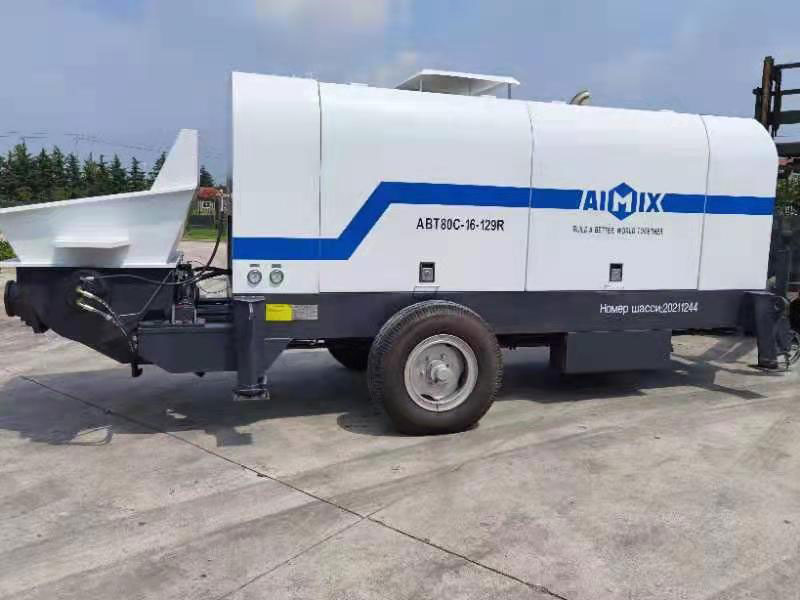Concrete pumps have become indispensable assets in the construction industry, revolutionizing the way concrete is transported and placed in various construction projects. As technology advances and global construction needs evolve, the development prospects for concrete pumps are promising. This article explores the potential future trajectory of concrete pumps, focusing on technological innovations, sustainability, and the role these machines will play in shaping the construction landscape.
Technological Advancements:
The future of concrete pumps is intricately tied to technological advancements. The ongoing integration of smart technologies, automation, and data analytics is set to transform the way these machines operate. Smart concrete pump equipment equipped with sensors and advanced control systems can offer real-time monitoring of critical parameters, predictive maintenance capabilities, and improved overall efficiency. Automation features may enhance precision in concrete placement, reducing human error and optimizing construction processes.
Remote Operation and Connectivity:
The prospect of remote operation and connectivity is on the horizon for concrete pumps. With advancements in remote control technologies and connectivity solutions, operators may be able to control and monitor concrete pumps from a centralized location. This not only enhances safety by reducing the need for personnel in proximity to the pump but also allows for more efficient and coordinated construction operations.
Environmentally Friendly Innovations:
Sustainable development is a key focus across industries, and the construction sector is no exception. The future of concrete pumps may see increased emphasis on environmentally friendly innovations. This includes the development of electric-powered or hybrid concrete pumps to reduce emissions and energy consumption. Additionally, innovations in materials used for pump components may prioritize recyclability and environmental impact reduction.
Integration of Artificial Intelligence (AI):
The integration of Artificial Intelligence (AI) holds great potential for the future of concrete pumps. AI algorithms can optimize pump operation by analyzing data in real time, adapting to changing conditions, and predicting potential issues before they arise. This level of intelligence can enhance efficiency, reduce downtime, and contribute to more sustainable and cost-effective construction practices.
Advancements in Pumping Technology:
As construction projects become more complex and demanding, the development of specialized pumping technologies is anticipated. Innovations in high-pressure pumping systems increased pumping distances, and enhanced concrete delivery mechanisms will likely be key areas of focus. These advancements aim to meet the evolving needs of large-scale infrastructure projects, high-rise constructions, and projects in challenging terrains.
Improved Safety Features:
Safety is paramount in construction, and future small concrete pump machines are likely to incorporate even more advanced safety features. This may include the integration of collision detection systems, improved emergency shutdown mechanisms, and enhanced operator-assist technologies. These safety features not only protect personnel on the job site but also contribute to the overall reliability of concrete pumping operations.
Global Market Expansion:
The demand for construction and infrastructure development is rising globally, particularly in emerging economies. The development prospects for concrete pumps include an expanding market reach as these machines become essential assets in construction projects around the world. Increased urbanization, the need for sustainable infrastructure, and the growing complexity of construction projects contribute to the positive outlook for the global concrete pump market.
Customization and Adaptability:
Future concrete pumps are likely to be more customizable and adaptable to a diverse range of construction scenarios. The ability to tailor pumps to specific project requirements, such as different concrete mixes, delivery distances, and job site conditions, will be a key factor in their continued success. Customization enhances efficiency and ensures that concrete pumps remain versatile tools in the construction toolkit.
Conclusion:
The development prospects of concrete pumps paint a picture of innovation, sustainability, and increased efficiency in the construction industry. As technology continues to advance, these machines are poised to play a pivotal role in shaping the future of construction, offering solutions to meet the evolving demands of infrastructure development worldwide. From smart technologies and environmental sustainability to improved safety features and market expansion, the future horizon of concrete pumps is characterized by a commitment to progress and excellence in construction practices.


Comments
No comments yet. Be the first to react!